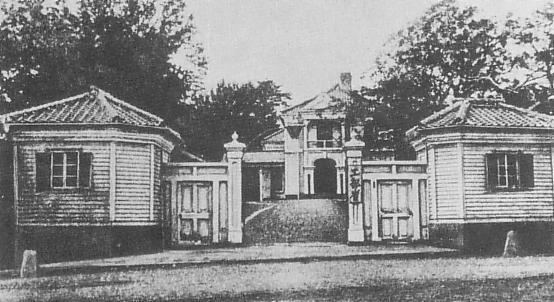 | ||
The Ministry of Industry (工部省, Kōbushō) was a cabinet-level ministry in the Daijō-kan system of government of the Meiji period Empire of Japan from 1870-1885. It is also sometimes referred to as the “Ministry of Public Works” or the “Ministry of Engineering” or “Ministry of Construction”.
History
The Ministry of Industry was created on December 12, 1870 out of the Ministry of Popular Affairs. The new organization was tasked by the Meiji oligarchy with the creation of the infrastructure of modern Japan, including railroads, shipyards, lighthouses, mines, an iron and steel industry, glass plants, cement factories and textile plants, a telegraph bureau, and street lights. It employed numerous foreign advisors during its existence. It also created the Imperial College of Engineering (the predecessor of the Tokyo Imperial University College of Engineering). One of the key roles of the ministry was locating, and if necessary, reverse engineering overseas technology. For example, in 1877, only a year after the invention of the telephone, engineers employed by the ministry had obtained examples and were attempting to create a domestic version. By the mid-1880s, many of the industries created by the Ministry of Industry were privatized. With the establishment of the cabinet system under the Meiji Constitution on December 22, 1885, the ministry was abolished, with its functions divided between the new Ministry of Agriculture and Commerce and the Ministry of Communications.
